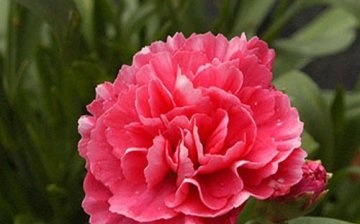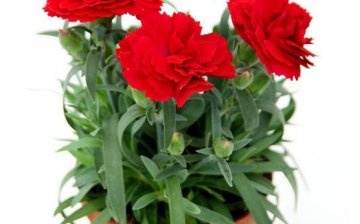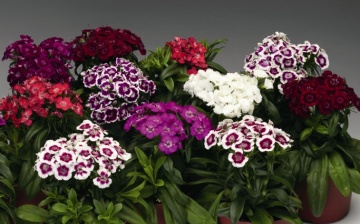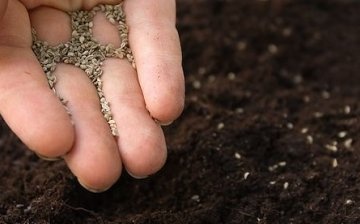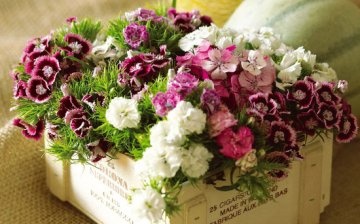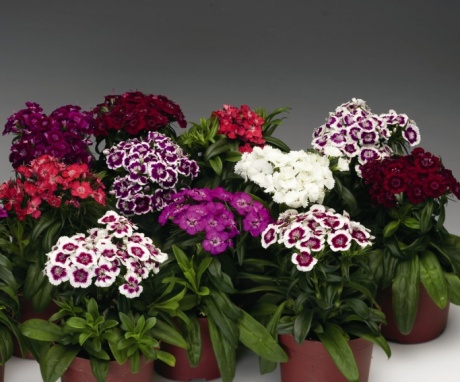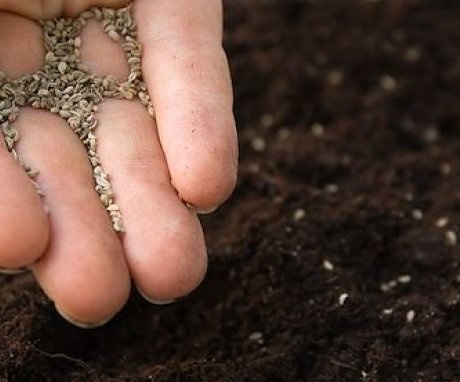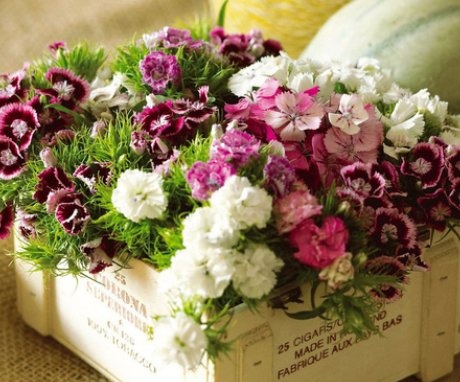Indoor carnation: features and growing rules
The genus of carnation today has more than 300 species, and some of them are quite suitable for indoor cultivation. Several compact hybrid species have become a good solution for potting, and the total number of varieties today is several hundred. This modest and unpretentious flower has always attracted the attention of gardeners, it is no coincidence that its Latin name Dianthus can be translated as "divine".
Content:
- Origin and types of cloves
- Rules for growing indoor cloves
- Breeding rules for indoor cloves
- Difficulties in growing carnations
- Secrets of growing carnations in the room
Origin and types of cloves
Carnation came to Europe from Northern China, and it also grows in Japan and the Primorsky Territory. Since the plant is distinguished by its unpretentiousness, several types of carnations are most widespread in European countries. Different varieties can be very different from each other, so you can choose a flower to your liking.
The most popular varieties for potting are:
- Chinese carnation... It is a very beautiful plant with a wonderful variety of petal shades. They can be red, pink, white, bicolor. The petals have a corrugated edge, which gives them a special charm. The stem is creeping, the plant is classified as annual.
- Turkish carnation... This species differs from others in that its buds are collected in thyroid inflorescences, the diameter of which can be up to 12 cm. The flowers also have a corrugated edge, they can be either double or simple. This species attracts flower growers with a variety of colors: the buds can be white, pink, lilac, they are often decorated with a border. One of the features of this species is its undemandingness to light.
- Hybrid carnation is one of the most beautiful and favorite species of flower growers. This is an annual plant no more than 20 cm high. During the entire flowering, it is completely covered with bright large buds.
- Grenadine carnation is a type of garden carnation specially bred for indoor cultivation. It is distinguished by large double buds with a corrugated edge of the petals.
All these species are very often combined into one - indoor carnation, since they have approximately the same requirements for growing and take up little space.
All are characterized by a pleasant aroma and long flowering, but, unfortunately, all these plants are only annuals.
Rules for growing indoor cloves
In all types of indoor cloves, several characteristic features can be distinguished: they belong to light-loving plants and require long daylight hours. At the same time, it is important to observe the correct temperature regime: the carnation does not tolerate intense heat well, the ideal temperature for it is 13-15 degrees.
Lack of light or, on the contrary, too hot sun rays lead to a slowdown in growth, and the plant will bloom much worse.
Other mandatory rules for growing carnations on a windowsill:
- Plant demanding for watering, the soil in the pot should never dry out completely. In this case, moisture should not stagnate in the soil, so you need to take care of the drainage layer. For watering, it is better to choose soft, settled water, it should not be cold. Cloves are very fond of evening spraying, especially after a hot day.
- For cloves, it is recommended to select neutral soils. Ideal proportion: leafy soil, peat and turf soil in a ratio of 1: 1: 2. Cloves are afraid of microorganisms, so the soil must first be spilled with antiseptic solutions.
- Top dressing is necessary for lush flowering, therefore complex mineral fertilizers are diluted for carnations and the soil is sprayed. The amount of fertilizer should not be excessive, 1 spraying of the soil every 10 days is enough. Fertilizers begin to be applied to the soil after the first month from the moment of transplantation.
To make the bush lush, young shoots need to be pinched, forming a crown.
The plant does not suffer from this procedure, as it quickly produces lateral shoots. Overall rules carnation care is quite simple... If you do not forget to water it and provide it with enough light, you can be sure that it will bloom soon and will delight the owner for a very long time with magnificent buds with a delicate pleasant aroma.
Breeding rules for indoor cloves
At home, the easiest way to propagate a carnation is by seed, and if you experiment with crossing several varieties, you can achieve interesting color combinations of buds. Sowing is carried out in early spring, in March-April, and carnation seeds are usually very germinating. Sowing material should not be stored for a long time: the seeds obtained from last year's plant sprout best.
Growing tricks:
- Seeds optional pre-soak, it is enough to place them in a container with soil to a depth of 2-3 mm and moisten them abundantly with water.
- The containers must be placed in a bright place, the first shoots may appear after a week.
- When the seedlings germinate, and they have at least 5 true leaves, you can start forming the future bush. To do this, the tip is pinched, the same will need to be done with the side shoots.
- Correct pinching will allow you to form a beautiful crown and achieve abundant flowering.
The carnation begins to bloom approximately 3-4 months after planting. So the bushes planted in spring will delight you with flowering all summer. Seeds can also be planted before winter, but in this case, the carnation will bloom only next year.
For biennial and perennial species, other breeding methods are used: these are dividing a bush and transplanting cuttings.
In any case, it is important not to bury an overly young plant in the soil. Plantings need to be watered in a timely manner, sand is often added to the soil so that moisture does not stagnate and does not lead to decay of the roots.
Difficulties in growing carnations
However, there are still a few common problems to be aware of before landing. Although the plant is not too demanding on conditions, it is afraid of pests.
Carnation pests:
- A spider mite affects the carnation - in this case, the reverse side of the leaves will be covered with a white bloom, and the plant will bloom much worse.
- Aphids are also a threat, powdery mildew and other common pests.
Spider mites and other parasites most often have to be treated more than once.
The carnation must be protected from threats: if any plant on the windowsill is affected, it is better to immediately remove the carnation pot to another place. If signs of disease appear, the leaves are washed with soapy water. In this case, you need to make sure that the soap does not get on the roots - this can only damage the plant. The foam is left on the leaves for several hours (but not overnight), and then washed off.
You can also use folk remedies: spider mites can be successfully fought with the help of infusion of tansy and yarrow.
If these measures do not work, it is better to purchase special fungicides in a phyto-pharmacy. One of the effective remedies is Actellik - this drug kills most pests, but it is toxic, so it is used only in extreme cases. Another effective remedy is Fitoverm, it is safer, but you still need to carefully follow the instructions.
Often cloves get sick if poor quality soil is used. Purchased in a store, and even more so recruited in the garden, the earth must be spilled with a weak solution of potassium permanganate in order to kill microorganisms.
Secrets of growing carnations in the room
Since this plant has long been grown indoors, you can use a few tricks that gardeners have worked out:
- When growing biennial and perennial varieties, the plant must be renewed every time from the petiole. The old carnation blooms much worse, and the petiole after transplantation will again give large buds.
- If the cuttings were planted in late summer, flowering can be achieved even in winter. To do this, you need to organize a long daylight hours: when the sun goes down, the plant is additionally illuminated with a special lamp.
- When the bud begins to fade, it is advisable to immediately remove it from the bush. the same should be done with lateral flowers if there are too many of them. and the plant may not have enough strength for full flowering.
- In the summer, it is advisable to ventilate the room with a carnation more often. She needs fresh air and does not like too high temperatures.
With proper care, indoor carnations can be made into a great decoration.
She will find a place on the balcony or on the loggia, it can be easily placed on the windowsill, since the bushes do not take up extra space. You can plant several plants with different flower buds in one container by organizing a mini-flower bed on the windowsill.
Modest yet very beautiful flower will cheer up and delight all family members for a very long time. Indoor carnation is the easiest way to diversify your home interior.
More information can be found in the video.



